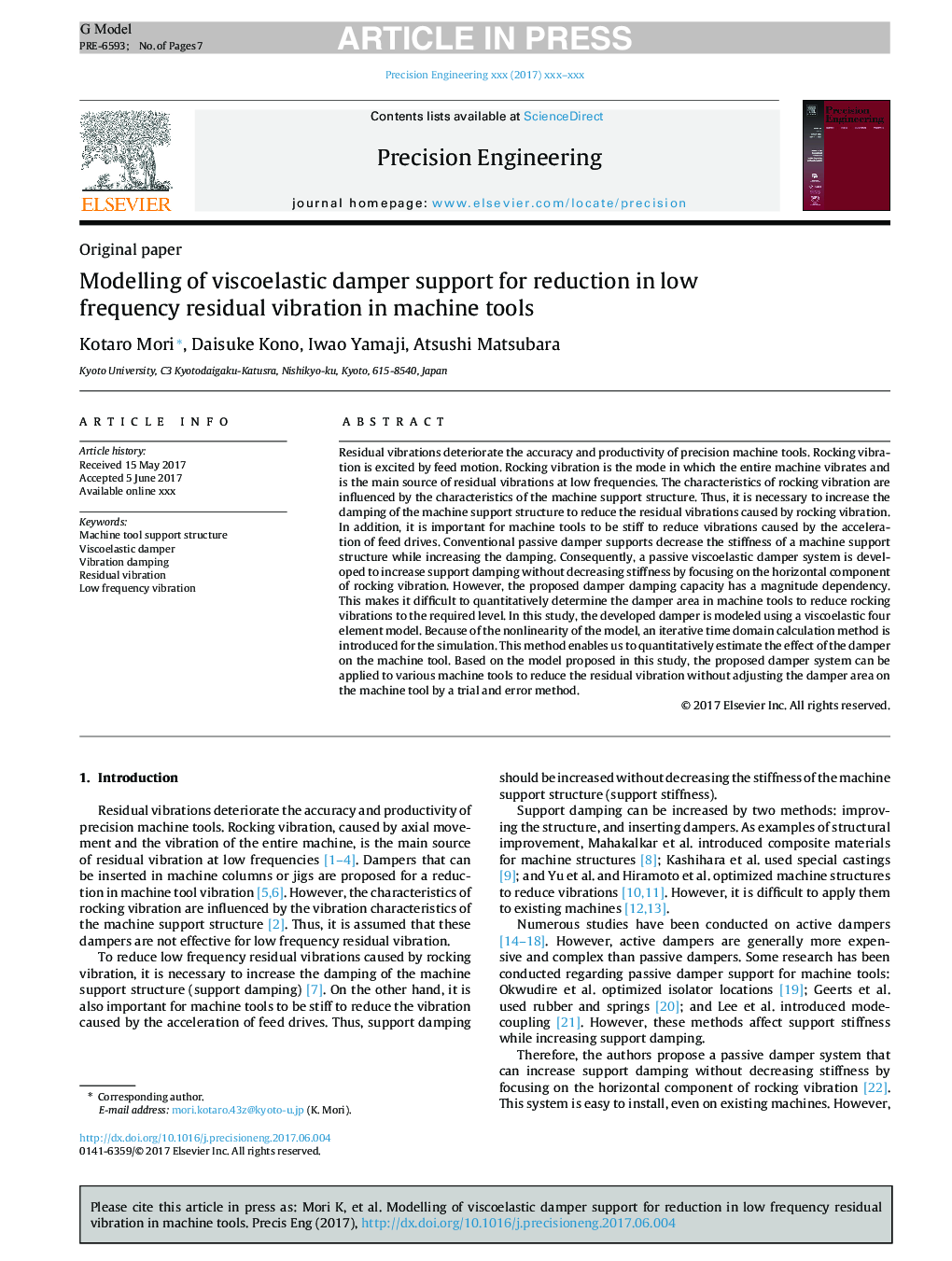| Article ID | Journal | Published Year | Pages | File Type |
|---|---|---|---|---|
| 5019050 | Precision Engineering | 2017 | 7 Pages |
Abstract
Residual vibrations deteriorate the accuracy and productivity of precision machine tools. Rocking vibration is excited by feed motion. Rocking vibration is the mode in which the entire machine vibrates and is the main source of residual vibrations at low frequencies. The characteristics of rocking vibration are influenced by the characteristics of the machine support structure. Thus, it is necessary to increase the damping of the machine support structure to reduce the residual vibrations caused by rocking vibration. In addition, it is important for machine tools to be stiff to reduce vibrations caused by the acceleration of feed drives. Conventional passive damper supports decrease the stiffness of a machine support structure while increasing the damping. Consequently, a passive viscoelastic damper system is developed to increase support damping without decreasing stiffness by focusing on the horizontal component of rocking vibration. However, the proposed damper damping capacity has a magnitude dependency. This makes it difficult to quantitatively determine the damper area in machine tools to reduce rocking vibrations to the required level. In this study, the developed damper is modeled using a viscoelastic four element model. Because of the nonlinearity of the model, an iterative time domain calculation method is introduced for the simulation. This method enables us to quantitatively estimate the effect of the damper on the machine tool. Based on the model proposed in this study, the proposed damper system can be applied to various machine tools to reduce the residual vibration without adjusting the damper area on the machine tool by a trial and error method.
Related Topics
Physical Sciences and Engineering
Engineering
Industrial and Manufacturing Engineering
Authors
Kotaro Mori, Daisuke Kono, Iwao Yamaji, Atsushi Matsubara,
